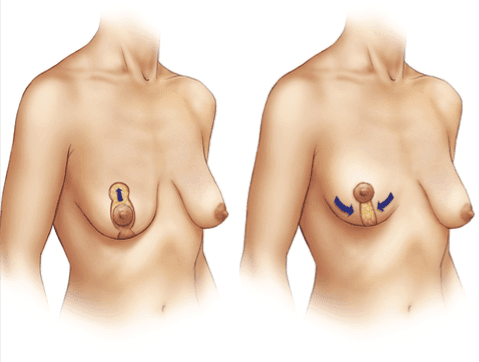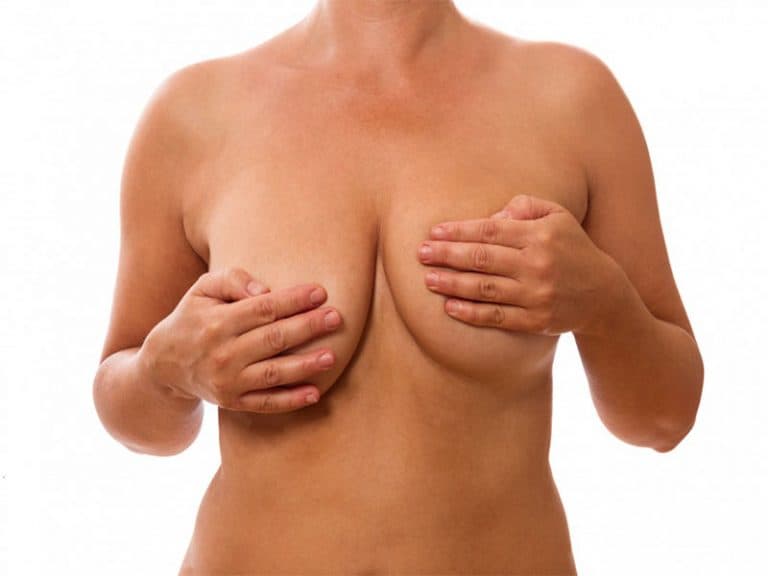When considering breast surgery, it’s essential to understand the differences between mammoplasty and mastopexy, as each procedure addresses distinct concerns and goals.
Mammaplasty vs. Mastopexy
Mammaplasty and mastopexy are two distinct surgical procedures aimed at enhancing the appearance of the breasts, but they serve different purposes.
Mammaplasty encompasses both breast augmentation and reduction. Augmentation mammaplasty involves increasing the breast size using implants, often chosen by women seeking to enhance naturally small breasts or restore volume lost due to pregnancy, weight loss, or aging. Reduction mammaplasty, on the other hand, reduces breast size by removing excess skin, fat, and tissue, providing relief from physical discomfort like back and neck pain.
Mastopexy, commonly known as a breast lift, focuses on reshaping and lifting sagging breasts without significantly altering their size. This procedure removes excess skin and tightens the surrounding tissue to support and reshape the new breast contour, often repositioning the nipple and areola for a more youthful appearance.
While mammaplasty addresses volume changes, mastopexy primarily targets breast sagging and drooping. Both procedures can be combined for comprehensive breast enhancement, depending on individual needs and goals.

What is Mammaplasty?
Mammaplasty, also known as mammoplasty, refers to a group of surgical procedures designed to reshape or modify the appearance of the breasts. This term encompasses both augmentation and reduction surgeries, each serving different purposes and addressing various patient needs. Augmentation mammaplasty involves increasing the size, changing the shape, or altering the texture of the breasts, typically through the insertion of implants or fat transfer. This procedure is often sought by individuals looking to enhance naturally small breasts, restore volume lost due to pregnancy, weight loss, or aging, or achieve a more symmetrical breast appearance. The implants used can be filled with saline or silicone gel, and they can be placed either under the chest muscle or over it, depending on the desired outcome and the surgeon's recommendation.
On the other hand, reduction mammaplasty aims to decrease the size of the breasts by removing excess breast tissue, fat, and skin. This procedure is often pursued by individuals experiencing physical discomfort such as back, neck, and shoulder pain due to overly large breasts. It can also help alleviate skin irritation and improve the ability to engage in physical activities. Reduction mammaplasty not only provides physical relief but also enhances the overall breast shape and proportion, contributing to a more balanced and aesthetically pleasing appearance.
Both types of mammaplasty can have significant psychological benefits, boosting self-esteem and body image. However, they also come with potential risks and complications, such as infection, scarring, changes in nipple or breast sensation, and issues related to anesthesia. It's crucial for individuals considering these procedures to have thorough consultations with qualified plastic surgeons to discuss their goals, expectations, and any potential risks.
Mammaplasty has evolved significantly over the years, with advancements in surgical techniques and implant technology improving outcomes and reducing recovery times. The decision to undergo mammaplasty is highly personal and should be made based on individual needs and circumstances. Whether for cosmetic enhancement or medical necessity, mammaplasty offers a way to achieve desired breast aesthetics and improve quality of life.

Pros & Cons of Mammaplasty
Pros of Mammaplasty
Mammaplasty, encompassing both breast augmentation and reduction, offers numerous benefits that can significantly enhance a person's quality of life.
One of the primary advantages of breast augmentation is the boost in self-confidence and body image it provides. Many individuals seek this procedure to achieve a more proportionate figure, which can lead to improved self-esteem and a more positive self-perception. Additionally, breast augmentation can restore volume lost due to aging, pregnancy, or weight loss, helping individuals regain a youthful and fuller breast appearance.
Breast reduction, or reduction mammaplasty, offers substantial physical and emotional benefits, particularly for those with overly large breasts. One of the most significant advantages is the alleviation of physical discomfort. Large breasts can cause chronic back, neck, and shoulder pain, as well as skin irritation and rashes under the breasts. By reducing breast size, individuals often experience immediate relief from these symptoms, leading to a more comfortable and active lifestyle. This procedure can also improve posture and make it easier to engage in physical activities, which might have been challenging or painful before.
Another notable benefit of mammaplasty, particularly breast reduction, is the enhancement of overall body proportions. By achieving a more balanced figure, individuals often find that clothing fits better and they feel more confident in their appearance. This can have a profound impact on one's social interactions and overall mental well-being. Furthermore, both augmentation and reduction mammaplasty can address asymmetry, providing a more symmetrical and aesthetically pleasing breast appearance.
From a psychological perspective, mammaplasty can significantly improve mental health. Many individuals report feeling less self-conscious and more comfortable in social and intimate settings after undergoing these procedures. The emotional burden of dealing with body image issues or physical discomfort is often lifted, leading to a more positive outlook on life.
Cons of Mammaplasty
While mammaplasty, including both breast augmentation and reduction, offers numerous benefits, it also comes with potential drawbacks and risks that should be carefully considered.
One of the primary concerns is the risk of surgical complications. These can include infection, bleeding, and adverse reactions to anesthesia. Postoperative infections, although relatively rare, can lead to prolonged recovery times and may require additional medical treatment.
Scarring is another significant consideration. Any surgical procedure involving incisions will result in some degree of scarring. The extent and visibility of scars can vary depending on the individual's skin type, the surgical technique used, and how well the surgical site heals. For some, these scars can be a source of dissatisfaction, particularly if they are prominent or do not fade as expected.
Changes in sensation are also common after mammaplasty. Patients may experience numbness or a loss of sensation in the nipples or breast skin, which can be temporary or permanent. This can affect not only physical sensation but also emotional and sexual well-being.
For those undergoing breast reduction, there is a risk of asymmetry, where the breasts may not be perfectly symmetrical in size or shape post-surgery. This can sometimes necessitate further corrective procedures. Additionally, breast reduction can impact the ability to breastfeed, as the surgery may involve removing or damaging milk ducts and glands.
Psychological impacts should not be overlooked. While many individuals experience improved self-esteem and body image post-surgery, others may face disappointment if the results do not meet their expectations. The emotional adjustment to a new body image can be challenging, and some may experience regret or dissatisfaction.
Recovery time and the associated discomfort are also important factors. Mammaplasty typically requires a significant recovery period, during which patients may experience pain, swelling, and limited mobility. This can impact daily activities and work, requiring time off and support during the healing process.
Finally, there is the financial cost to consider. Mammaplasty can be expensive, and while some insurance plans may cover breast reduction for medical reasons, cosmetic procedures like augmentation are usually not covered. This financial burden can be a significant drawback for many individuals.

What is Mastopexy?
Mastopexy, commonly known as a breast lift, is a cosmetic surgical procedure designed to raise and reshape sagging breasts, providing a firmer and more youthful appearance. Over time, factors such as aging, pregnancy, breastfeeding, weight fluctuations, and gravity can cause the breasts to lose their elasticity and firmness, leading to a drooping or sagging appearance. Mastopexy addresses these changes by removing excess skin, tightening the surrounding tissue, and repositioning the nipple and areola to a higher, more aesthetically pleasing location.
During a mastopexy procedure, a plastic surgeon makes incisions around the areola and possibly extending down the front of the breast and along the breast crease, depending on the degree of lift required. The surgeon then removes excess skin and reshapes the breast tissue to create a more rounded and uplifted contour. The nipple and areola are repositioned to a higher position, and the size of the areola may be reduced if necessary. The incisions are then closed with sutures, skin adhesives, or surgical tape, and the results are immediately noticeable, although final results will continue to improve as swelling subsides and the breasts settle into their new shape.
Mastopexy can be performed as a standalone procedure or in combination with other breast surgeries, such as breast augmentation or reduction, to achieve the desired breast size and shape. For instance, combining a breast lift with augmentation can enhance both the position and volume of the breasts, while combining it with reduction can alleviate physical discomfort from overly large breasts while also lifting them.

Pros & Cons of Mastopexy
Pros of Mastopexy
Mastopexy, or breast lift surgery, offers a range of benefits that can significantly enhance both physical appearance and overall quality of life.
One of the most immediate and noticeable advantages is the improvement in breast aesthetics. By lifting and reshaping sagging breasts, mastopexy creates a firmer, more youthful contour, which can greatly enhance a person's body image and self-confidence. This procedure addresses common issues such as drooping, asymmetry, and stretched skin, resulting in a more balanced and proportionate appearance.
Another significant benefit of mastopexy is the enhancement of breast symmetry. Many individuals have naturally asymmetrical breasts, where one breast is noticeably different in size or shape from the other. Mastopexy can correct these discrepancies, providing a more harmonious and symmetrical look. This can be particularly important for those who feel self-conscious about their breast asymmetry, leading to improved self-esteem and comfort in various social and intimate settings.
Functional improvements are also a key advantage of mastopexy. By removing excess skin and tightening the breast tissue, the procedure can reduce discomfort associated with sagging breasts, such as skin irritation and chafing under the breast fold. Additionally, the repositioning of the nipples and areolas to a more forward-facing and elevated position can enhance the overall breast appearance and function.
Mastopexy can also have a positive impact on clothing fit and style choices. Post-surgery, many individuals find that their bras and clothing fit better and more comfortably. This can open up new possibilities in fashion, allowing individuals to wear styles they may have previously avoided due to concerns about breast sagging or asymmetry. The improved fit and appearance in clothing can further boost confidence and satisfaction with one's body image.
From a psychological perspective, the benefits of mastopexy extend beyond physical changes. Many individuals report a significant boost in mental well-being and a reduction in self-consciousness after the procedure. The emotional relief from addressing long-standing concerns about breast appearance can lead to a more positive outlook on life and greater overall happiness.
Cons of Mastopexy
While mastopexy, or breast lift surgery, offers numerous benefits, it also comes with potential drawbacks and risks that should be carefully considered.
One of the primary concerns is the risk of surgical complications. These can include infection, bleeding, and adverse reactions to anesthesia. Postoperative infections, although relatively rare, can lead to prolonged recovery times and may require additional medical treatment.
Scarring is another significant consideration. Any surgical procedure involving incisions will result in some degree of scarring. The extent and visibility of scars can vary depending on the individual's skin type, the surgical technique used, and how well the surgical site heals. For some, these scars can be a source of dissatisfaction, particularly if they are prominent or do not fade as expected.
Changes in sensation are also common after mastopexy. Patients may experience numbness or a loss of sensation in the nipples or breast skin, which can be temporary or permanent. This can affect not only physical sensation but also emotional and sexual well-being.
Asymmetry is another potential issue. Despite the surgeon's best efforts, perfect symmetry is challenging to achieve, and some patients may notice slight differences in the size or shape of their breasts post-surgery. This can sometimes necessitate further corrective procedures.
Recovery time and the associated discomfort are also important factors. Mastopexy typically requires a significant recovery period, during which patients may experience pain, swelling, and limited mobility. This can impact daily activities and work, requiring time off and support during the healing process.
Financial cost is another consideration. Mastopexy can be expensive, and while some insurance plans may cover the procedure if it is deemed medically necessary, it is often considered a cosmetic surgery and not covered by insurance. This financial burden can be a significant drawback for many individuals.
Psychological impacts should not be overlooked. While many individuals experience improved self-esteem and body image post-surgery, others may face disappointment if the results do not meet their expectations. The emotional adjustment to a new body image can be challenging, and some may experience regret or dissatisfaction.

Differences between mammaplasty & Mastopexy
Mammaplasty and mastopexy are both surgical procedures aimed at enhancing the appearance of the breasts, but they serve different purposes. Mammaplasty refers to surgeries that alter the size and shape of the breasts, including both breast augmentation and reduction. On the other hand, mastopexy, commonly known as a breast lift, focuses on lifting and reshaping sagging breasts without significantly changing their size. The methods used in mammaplasty and mastopexy differ significantly due to their distinct objectives.
Mammaplasty includes both augmentation and reduction procedures. In augmentation mammaplasty, implants (saline or silicone) or fat transfer are used to increase breast size. The implants can be placed either under the chest muscle or over it, depending on the desired outcome and the surgeon's recommendation. Reduction mammaplasty involves removing excess breast tissue, fat, and skin to decrease breast size, often using techniques like liposuction or surgical excision.
Mastopexy, or breast lift, focuses on lifting and reshaping sagging breasts without significantly altering their size. This procedure involves making incisions around the areola, vertically down to the breast crease, and sometimes horizontally along the breast crease. Excess skin is removed, and the remaining skin is tightened to lift the breast. The nipple and areola are also repositioned to a higher, more youthful location. Unlike mammaplasty, mastopexy does not typically involve altering the volume of the breast but rather focuses on improving its shape and position.

Conclusion
In conclusion, while both mammaplasty and mastopexy aim to enhance the appearance of the breasts, they cater to different needs and outcomes. Mammaplasty primarily focuses on altering the size of the breasts, either through augmentation or reduction, to achieve the desired volume and alleviate any physical discomfort associated with breast size. Conversely, mastopexy is designed to lift and reshape sagging breasts, providing a more youthful and elevated appearance without significantly changing their size. Understanding these distinctions can help individuals make informed decisions based on their specific aesthetic goals and physical needs.
Read More